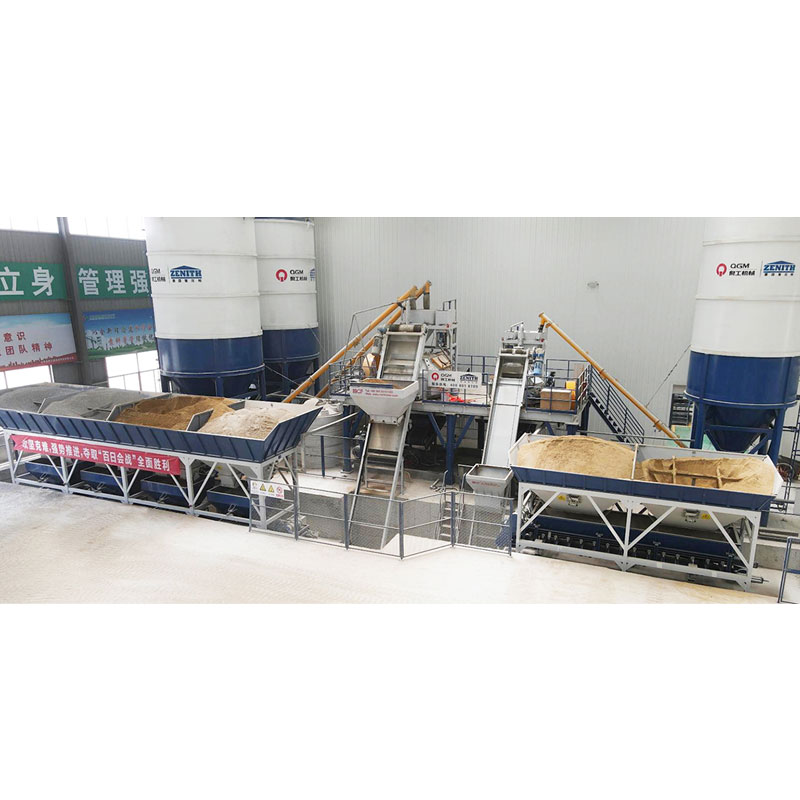Components and Operation of Brick Batching Machines
2024-05-11
A brick batching machine, also known as a brick making machine or a brick manufacturing plant, is a specialized piece of equipment used in the production of bricks or blocks. It automates the process of mixing raw materials, forming the bricks, and curing or drying them to produce finished products ready for use in construction. Here's an overview of the components and operation of a typical brick batching machine:
1. Raw Material Handling: The process begins with the handling and preparation of raw materials required for brick production. Common raw materials include clay, sand, cement, water, and additives such as fly ash or lime. These materials are stored in designated bins or silos near the batching machine.
2. Batching and Mixing: The batching machine measures and dispenses precise quantities of raw materials according to the desired mix ratio. The materials are then conveyed to a mixing chamber, where they are thoroughly blended to form a homogeneous mixture. The mixing process may involve rotating drums, paddle mixers, or continuous mixing systems to ensure uniform distribution of ingredients.
3. Forming: Once the raw materials are mixed, the resulting mixture, known as a brick or block "slurry," is transferred to a forming machine or mold. The forming machine shapes the slurry into individual bricks or blocks of the desired size and configuration. This can be done through various methods such as extrusion, compression molding, or vibration molding, depending on the specific design and technology of the machine.
4. Curing and Drying: After forming, the newly shaped bricks or blocks are transferred to a curing or drying area to set and harden. This may involve stacking the bricks on pallets or trays and subjecting them to controlled humidity, temperature, and airflow conditions to facilitate the curing process. Depending on the type of bricks and curing method, this stage may take several hours to several days to complete.
5. Quality Control: Throughout the production process, quality control measures are implemented to ensure that the bricks or blocks meet the required standards and specifications. This may involve monitoring parameters such as dimensions, density, compressive strength, color consistency, and surface finish.
6. Packaging and Storage: Once the bricks or blocks have been cured and inspected, they are typically packaged into bundles or pallets for storage, transportation, and sale. Packaging materials may include shrink wrap, stretch wrap, or straps to secure the bundles and protect the products from damage during handling and shipping.
7. Automation and Control Systems: Brick batching machines may feature advanced automation and control systems to optimize production efficiency, minimize waste, and ensure consistent quality. These systems may include PLCs (Programmable Logic Controllers), HMI (Human-Machine Interface) panels, sensors, and software for monitoring and controlling various aspects of the production process.
8. Modularity and Scalability: Some brick batching machines are designed to be modular and scalable, allowing for easy expansion or customization of production capacity and capabilities. Additional modules or components can be added as needed to accommodate growing demand or changes in product requirements.
Brick batching machines play a vital role in modern brick manufacturing operations, offering efficiency, consistency, and precision in the production of bricks and blocks for construction projects worldwide. Their integration of automated processes, quality control measures, and advanced technology helps streamline production and ensure the reliable supply of high-quality building materials to meet the demands of the construction industry.



